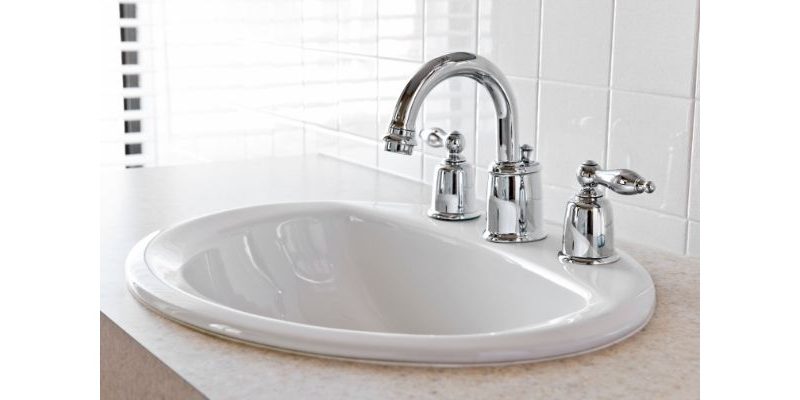When it comes to upgrading your bathroom, installing a new sink can make a significant impact on both functionality and aesthetics. However, before you dive into the installation process, there are several factors to consider to ensure that you choose the right sink for your space and needs. At remodelntx, we specialize in bathroom remodels and understand the importance of thoughtful planning and attention to detail. In this comprehensive guide, we’ll explore seven essential considerations to keep in mind before installing a new bathroom sink, helping you achieve the perfect balance of style and functionality for your space.
Table Of Content
Assessing Your Needs and Space
Functionality
- Usage Requirements: Consider how the bathroom sink will be used on a daily basis. Will it be primarily for handwashing, or do you need a sink with ample counter space for grooming and storage? Understanding your usage requirements will help you choose a sink that meets your needs.
- Available Space: Measure the available space in your bathroom to determine the size and style of sink that will fit comfortably within the layout. Take into account the dimensions of the vanity or countertop where the sink will be installed, as well as any surrounding fixtures or obstacles.
- Plumbing Considerations: Evaluate the existing plumbing configuration in your bathroom to determine if any adjustments or modifications will be necessary to accommodate the new sink. Consider factors such as drain placement, water supply lines, and venting requirements when planning the installation.
Choosing the Right Sink Style
Design and Aesthetics
- Sink Style: Select a sink style that complements the overall design aesthetic of your bathroom. Whether you prefer a sleek and modern vessel sink or a classic pedestal sink, choose a style that aligns with your personal taste and enhances the visual appeal of the space.
- Material Options: Explore different sink materials, such as porcelain, ceramic, glass, stainless steel, or stone, and consider factors such as durability, maintenance requirements, and compatibility with your bathroom’s design scheme. Choose a material that offers both style and functionality for your needs.
- Faucet Compatibility: Consider the type and style of faucet that will complement your chosen sink. Whether you prefer a single-handle, widespread, or wall-mounted faucet, ensure that it is compatible with the sink design and installation requirements.
Budget and Installation Considerations
Cost and Installation
- Budget Allocation: Determine your budget for the new bathroom sink, including the cost of the sink itself, installation materials, and any additional plumbing or construction expenses. Factor in any potential hidden costs or unforeseen complications that may arise during the installation process.
- DIY vs. Professional Installation: Decide whether you will tackle the sink installation as a DIY project or hire a professional contractor. While DIY installation can save money, complex plumbing or structural modifications may require the expertise of a professional to ensure a safe and successful installation.
- Permit Requirements: Check local building codes and permit requirements before installing a new bathroom sink, especially if the project involves significant plumbing or structural changes. Obtaining the necessary permits will ensure that your installation complies with all regulatory guidelines and safety standards.
Functionality and Maintenance
Practical Considerations
- Storage and Organization: Consider additional storage and organization options, such as under-sink cabinets, drawers, or shelving, to maximize the functionality of your bathroom space. Choose a sink configuration that allows for optimal storage solutions without compromising on style.
- Cleaning and Maintenance: Select a sink material and design that are easy to clean and maintain, minimizing the time and effort required to keep your bathroom looking pristine. Avoid materials that are prone to staining, scratching, or discoloration, especially in high-traffic areas.
- Accessibility and Universal Design: If you or your household members have mobility or accessibility needs, consider incorporating universal design principles into your sink installation. Choose a sink height and configuration that accommodates wheelchair access or provides grab bars for added stability and support.
Final Wording
Installing a new bathroom sink is a rewarding home improvement project that can enhance the functionality, aesthetics, and value of your space. By carefully considering factors such as functionality, space constraints, design aesthetics, budget, installation requirements, and maintenance considerations, you can choose the perfect sink for your bathroom that meets your needs and exceeds your expectations. At remodelntx, we’re here to help you every step of the way, from initial planning to final installation, ensuring a seamless and satisfying experience. Let us be your trusted partner in creating the bathroom of your dreams, one sink at a time.
FAQ’s
Yes, wall-mounted or pedestal sinks are often recommended for small bathrooms as they take up less floor space and create a sense of openness.
Vessel sinks require specific countertop configurations with enough space for the sink to sit securely. It’s essential to ensure compatibility with your chosen countertop material.
Consider factors like the sink’s design and configuration, the number of mounting holes, and your preferred style and finish to select a faucet that complements your sink and bathroom decor.
Yes, you can replace just the sink while keeping the existing vanity if it’s in good condition and compatible with the new sink’s dimensions and installation requirements.







